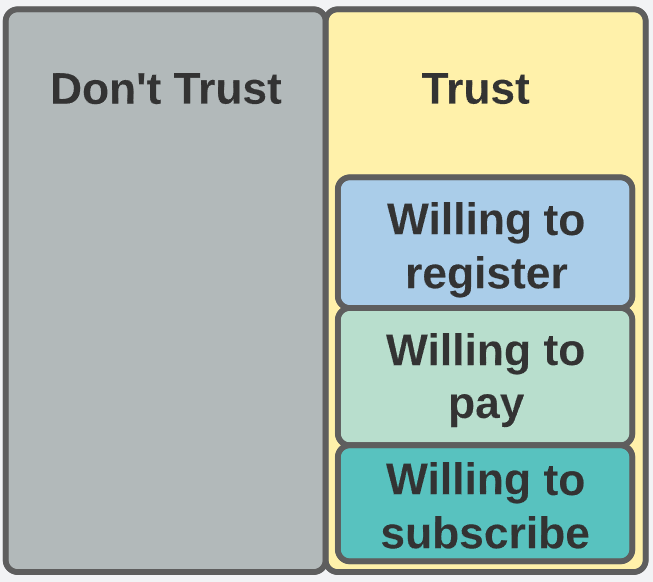Micropayments are the idea that won’t catch fire but also the idea that won’t die.
Publishers are starting to take another look at micropayments because ad revenues are declining, and subscription revenues aren’t always making up the difference. Are micropayments a desperation move, or do micropayments belong as part of the paid content ecosystem?
Advocates of micropayments will say that readers will only subscribe to a couple brands, but are willing to pay for content from many more. Right now, publishers tend to have some mix of these three options. Free access, access after registration, or access after a subscription. Giving readers the ability to purchase single articles creates a new revenue stream and a new way for readers to connect with a brand.
Generally speaking, I’m a big skeptic of this “connect with the brand” talk. More often than not that’s a marketing delusion. I have zero brand loyalty to the shoes I wear, for example. But in terms of publishing, think of it this way.
First, think in terms of source. There are sources that the reader trusts, and sources the reader doesn’t trust. We can break down the sources the reader trusts into two categories. The smaller category is sources the reader is willing to subscribe to. The larger category is sources the reader trusts, and might consider paying for, but won’t subscribe to.
Second, think in terms of types of content. There’s content the reader will pay for, and content the reader will never pay for, because it’s easy to find for free elsewhere. Once again, we can break down the content the reader will pay for into content the reader will subscribe to, and content the reader might consider paying for, but won’t subscribe to.
It’s obvious where micropayments fit in here, specifically, sources and content the reader trusts and is willing to pay for, but won’t subscribe to. At least not now.

Here’s the problem. If this is such an obvious and logical division – as it seems to be – why haven’t micropayments caught on?
I think there are a few reasons.
From the reader’s perspective …
- Any sort of regwall or paywall is an irritation. Unfortunately, we’ve trained a generation of readers to expect to get content for free. The micropayment solution would have to be as easy or easier than a regwall or paywall.
- Nobody wants to set up yet another account with somebody – who’s going to spam you forever and ever, amen – just to pay $2 to get a lousy article. An effective solution would have to be able to use a payment option the reader has already created, like Apple Pay, Google Pay, Paypal, etc. Also, it might be a good idea to have a method to give away an article or two when someone first signs up, just to sweeten the deal.
On the publisher side …
- It seems like a lot of work. Somebody has to pick which articles are for sale, set prices, assign SKUs, and then report on all that. Is it really worth the effort? An effective micropayment strategy would have to make that process very simple and fit into the publisher’s existing data scheme.
- The publisher might believe micropayments will detract from subscription sales, but we’ve already said that micropayments address the audience of people who are willing to pay, and trust the content, but aren’t yet willing to subscribe. So if it’s done right, it opens doors rather than closing them.
- The publisher needs to get the reader’s contact information. Getting a buck for an article is okay. The real money is in the relationship.
There are a lot of other things to consider here. For example, might different age groups have different attitudes to micropayments?
Anyway, if this is an issue that interests you, I’ve done a fair amount of thinking about it, and I’d be happy to talk it through with you. Contact me.




